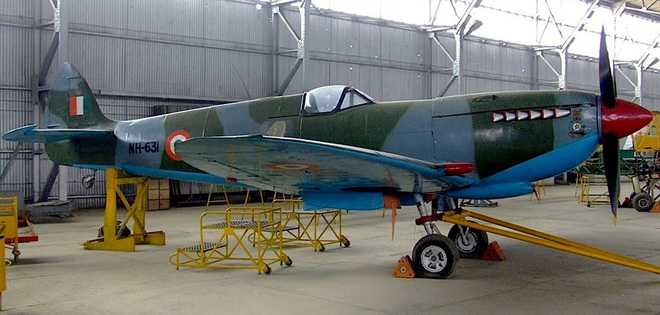World War II-era Spitfire to take wing again
Vijay Mohan
Tribune News Service
Chandigarh, May 23
Close on the heels of a vintage DC-3 Dakota transport aircraft taking wing after undergoing an exhaustive restoration process in the UK, the Indian Air Force has firmed up plans for undertaking a similar exercise on a World War–II era Spitfire fighter plane.
The Supermarine Spitfire, one of the most widely produced Allied warplanes during the world war, remained with the Air Force for about 16 years from February 1944 to January 1960. Various versions of this aircraft were operated by 15 squadrons and units, and saw action during the defence of the Kashmir valley in 1947.
In April this year, a restored Dakota, an iconic transport aircraft of its time, joined the ‘Vintage Flight’ based at Palam. It bears Tail No. VP 905, the same as the first Indian Dakota to transport troops of 1 Sikh to defend Srinagar from Pakistani raiders in 1947.
The Spitfire’s restoration work, to be done by an external agency, is an exhaustive process involving complete stripping down of the aircraft and cleaning, refurbishing and carrying out non-destructive testing or all components to be retained to ensure structural integrity, sources said.
The engine and avionics would be overhauled while fuel lines, seals, gaskets, rubber accessories, wing struts, rivet joints, electrical wiring, tyres and tubes would be replaced. The final assembly of the aircraft will be done in Delhi and then it will require airworthiness certification by aviation regulators.
Bearing Tail No NH-631, the Mark-VIII version had arrived in India in February 1945 and after seeing service first with the British Royal Air Force and then with different Indian squadrons and the Maintenance Command, it was scrapped in 1950. According to aviation historians, it was recovered by Air Cmde Harjinder Singh, the first Indian “Hawai Sepoy”, and flown to Ambala.
The aircraft was moved to the IAF museum in 1967 and was flown on ceremonial occasions, the last such flight being the Air Force Day parade in 1989. Thereafter, it made a few appearances on ground, being towed before the saluting dais. NH-631 has a sister aircraft that was among a lot sold as scrap by the Indian government, but is now flying in the US wearing British colours. In February 2003, a near-intact Spitfire that had crashed in May 1947 was recovered from a river bed near the Ambala airbase during digging work. The airframe was reconstructed and it has been on static display at the base.









